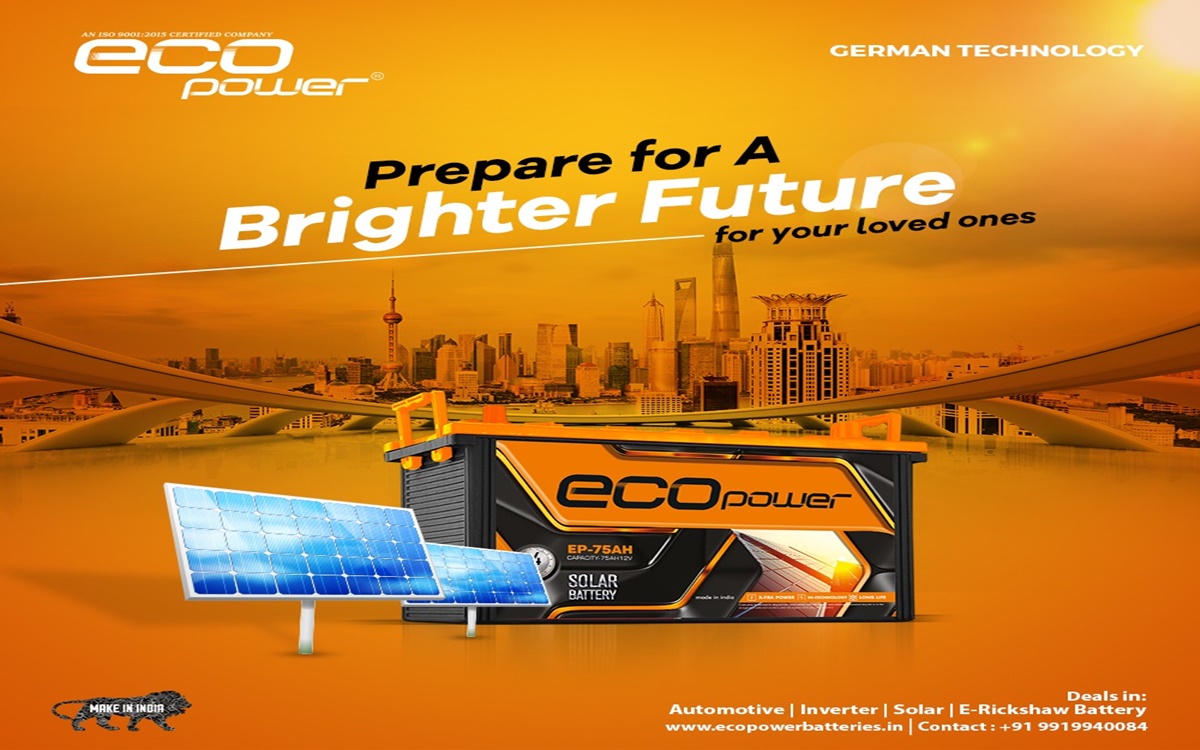In an era where sustainable living is at the top, the concept of Net Zero homes has emerged as a powerful solution. A net zero home is designed to generate as much energy as it consumes, resulting in a carbon-neutral footprint. As a leading solar battery manufacturer in India, Eco Power recognizes the importance of net zero homes powered by solar energy.
In this blog, we will go into the definition of net zero homes, explore the need for their implementation in India and discuss the key aspects of designing such homes.
Understanding Net Zero Homes:
Net Zero is a term whereas the energy produced is equal to energy consumed by a building or home. This is a systematic integration of energy-efficient designs and renewable energy, typically solar energy in homes in which no energy generated goes in vain.
These Net Zero homes embrace energy-saving strategies such as insulation, efficient appliances and smart technology to reduce energy demand. The remaining energy needs are met by harnessing clean and renewable energy sources, such as solar panels. By achieving a net zero energy balance, these homes contribute to carbon neutrality and sustainability.
Does India Require Net Zero Homes?
India, with its increasing population and growing energy demand, is in a prime position to benefit from Net Zero homes. The country faces environmental challenges, including rising carbon emissions and energy consumption. By transitioning to net zero homes, India can reduce its reliance on fossil fuels, decrease its carbon footprint and improve energy security. Furthermore, it aligns with the government’s ambitious renewable energy targets and promotes sustainable development in the housing sector.
Designing a Net Zero Home:
Designing a net zero home requires a holistic approach that integrates various elements. Here are key aspects to consider
1.Energy-efficient design:
Improve the orientation, insulation, and ventilation of the house to save energy. Use energy-saving devices and lighting options.
2.Solar power integration:
Based on energy requirements, determine the solar panel capacity that is appropriate. Install them in strategic locations to maximize sunlight reception. Moreover, for reliable and high-performance solar batteries, contact with reputable solar battery manufacturers in India like Eco Power.
3.Battery storage system:
Add solar battery storage to your system to capture any extra energy produced during the day. This stored energy can be used to generate electricity at night or when it’s cloudy, maintaining a steady supply and minimizing reliance on the grid.
4.Energy management:
Utilize smart energy management systems to monitor and control energy usage. Implement automation and energy-saving practices to optimize energy efficiency.
In conclusion, designing a net zero home powered by solar energy represents a significant stride towards sustainable living. India, with its energy challenges, stands to benefit greatly from embracing net zero homes. By employing energy-efficient design principles, integrating solar power with advanced battery storage systems, and collaborating with trusted solar battery manufacturers in India like Eco Power, we can create homes that not only minimize carbon emissions but also provide long-term energy independence.

